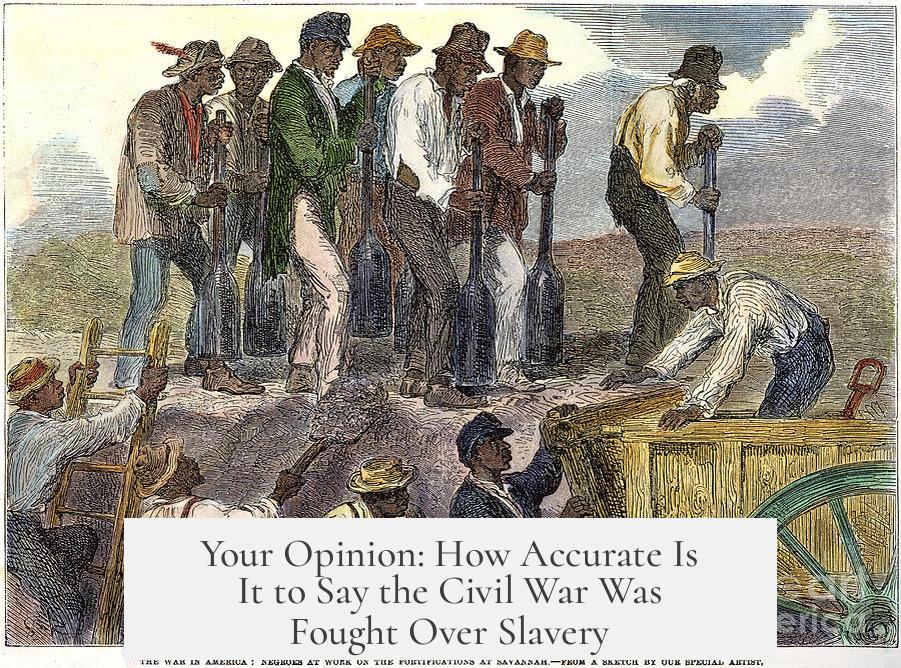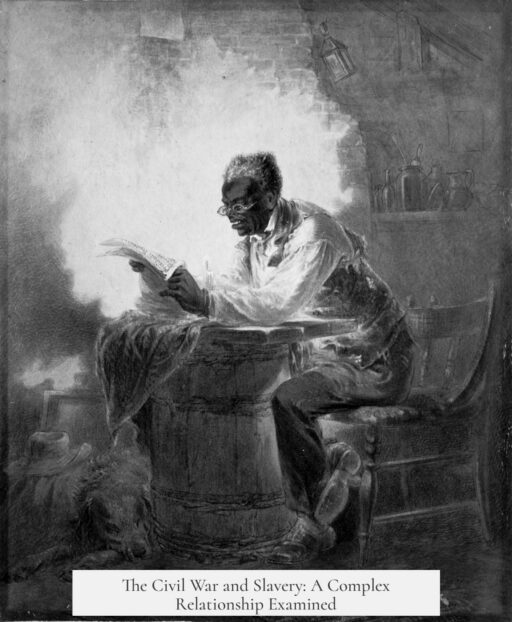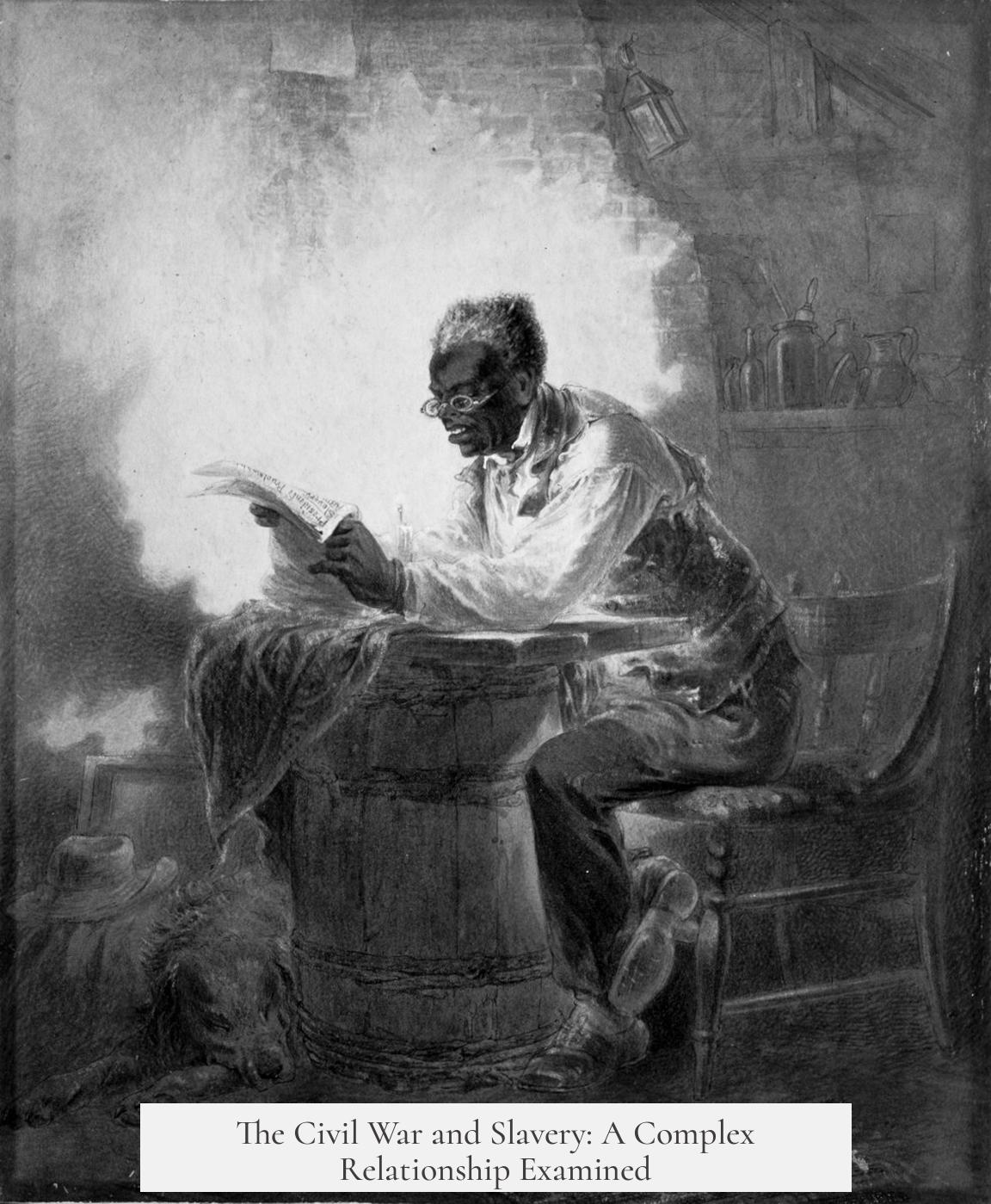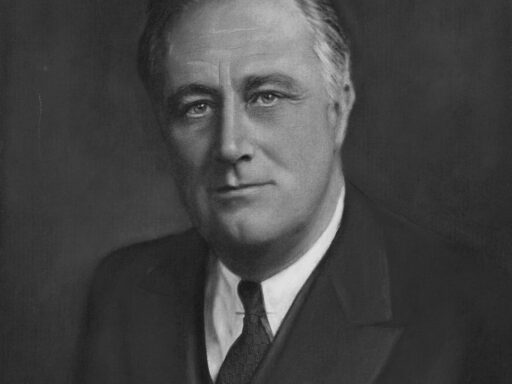It is accurate and essential to say that the Civil War was fought over slavery, though with important nuances regarding motivations and perspectives from both the North and the South. The conflict’s root cause centers on slavery, which sparked sectional tensions and ultimately led to Southern secession. While some argue other issues like states’ rights, tariffs, or economic differences played a role, nearly all stem from, or serve to defend, the institution of slavery.
People often understand the Civil War’s causes through three stages. The first is a simplistic view that slavery alone caused the war. The second acknowledges multiple causes—state sovereignty, trade disputes, economic interests—with slavery as one. The deepest understanding sees slavery underpinning all those issues, making it the fundamental cause despite other factors. This third viewpoint emerges from extensive study rather than early schooling.
The Confederate states clearly identified slavery as the primary reason for their departure. Their official secession documents explicitly state protecting and maintaining slavery as foundational goals. For instance, Texas’s declaration highlights preserving “the institution known as negro slavery” as a key motivation. Every major secession statement put slavery before other grievances. This strongly affirms that safeguarding slavery was central to the South’s breakaway.
Slavery fueled the tension between North and South on political, social, and economic levels. Southern society depended on slavery as an economic core, shaping wealth and class structures. Abandoning it threatened Southern elites’ financial survival. Thus, hostility toward perceived threats to slavery grew, leading directly to disunion.
On the other side, the North went to war primarily to preserve the Union. Most Northern citizens initially focused on preventing secession rather than abolishing slavery. Over time, Northern attitudes changed as soldiers witnessed slavery’s brutality firsthand. The Emancipation Proclamation marked a significant shift to make the abolition of slavery a war aim. Yet early in the conflict, many Northerners were not abolitionists but opposed slavery’s expansion into new states and territories.
The argument that the war was about states’ rights is largely a post-war revisionism by Southern apologists. States’ rights served primarily as a rhetorical cover for the defense of slavery. Southern states frequently violated states’ rights when it suited their interests before the war. Moreover, tariffs and trade disputes, often cited as causes, had uneven impacts and do not explain the cohesive Southern push to secede. Louisiana, for example, benefited from tariffs yet still joined the Confederacy.
Historical research supports slavery as central. Letters from Confederate soldiers describe fighting to maintain the system of racial subjugation more often than abstract concepts like states’ rights. Few soldiers cited states’ rights as their motivation. Works like Chandra Manning’s analysis of soldiers’ letters and Charles Dew’s studies of secession commissioners reinforce that the Confederacy fought to preserve slavery.
Economically, slavery was integral to Southern stability. The war has been described as “a rich man’s war, a poor man’s fight,” reflecting that lower-class soldiers eventually realized states’ rights rhetoric disguised wealthy elites’ desire to protect slavery’s profits. Some soldiers became indifferent to slavery’s fate, wishing primarily for peace and survival.
It is important to see the Civil War as involving secession and reunification. The South created a separate nation through secession, making the conflict more than a domestic civil war—it was a war to bring those states back into the Union. This secession was caused fundamentally by slavery and conflicts over legal state autonomy as it applied to slavery’s future.
In summary, while Northern motivations focused on preserving the Union and Southern rhetoric invoked states’ rights, the fundamental cause of the Civil War is slavery. States’ rights and economic arguments are predominantly secondary or rhetorical. To understand the war fully, one must recognize slavery’s role as the root of sectional conflict and the principle that led to disunion and armed conflict.
- The Civil War’s core cause was slavery, which fueled sectional tensions and Southern secession.
- Southern states’ declarations clearly emphasize protecting slavery as the key reason for leaving the Union.
- Northern war aims initially focused on preserving the Union; abolition of slavery became prominent later.
- States’ rights arguments post-date the war and often mask the centrality of slavery.
- Soldier accounts and historians overwhelmingly confirm slavery’s central role.
- Economic and social systems in the South depended on slavery; its loss threatened collapse.
- The Civil War was partly a conflict over the sovereignty of a new Confederate nation founded to preserve slavery.
Your Opinion: How Accurate Is It to Say the Civil War Was Fought Over Slavery?

Is it fair to boil down one of America’s most devastating conflicts to a single cause? Yes—and no. The Civil War was fundamentally about slavery, but peeling back its layers reveals a complex stew of motives, strategies, and shifting priorities. Let’s unpack this together, digging past the usual textbook soundbites.
Three Stages of Understanding the Civil War
For most, understanding the Civil War’s causes follows a familiar, if bumpy, journey. At first, many believe the war was just about slavery. This is the “You learned it in school” version. Then comes a more nuanced perspective, introducing state sovereignty, tariffs, and economic factors as causes alongside slavery. The most advanced understanding? Everything we think caused the war — when you really trace the roots — loops back to slavery. Nothing else holds a candle to it.
People seem to go through three stages of understanding the Civil War: 1) The war was just about slavery 2) The war was about complicated causes of state sovereignty, finances, trade, etc., with slavery being one of many issues 3) All the other causes are rooted into slavery in one way or another, and the few left over weren’t enough to drive a wedge in the Union. In the end, it really was just about slavery.
In other words, the initial simple story isn’t wrong—it’s just not the full story.
Slavery: The Hidden Puppeteer of Disunion
Slavery was the elephant in the room for decades before shots were fired. It wasn’t just a moral or political issue; slavery shaped economies, societies, and power structures. When Southern states drew up their secession documents, guess what they put front and center? Not states’ rights. Not unfair tariffs. Slavery.
| State | Reason for Secession Highlighted |
|---|---|
| Texas | “Maintaining and protecting the institution known as negro slavery… intended to exist in all future time.” |
| South Carolina | Defense of slavery as essential to social order and economy |
That’s not subtle. If anything, states’ rights was often the wrapper, but the gift inside was slavery itself.
The “States’ Rights” Argument: A Convenient Cloak

After the war, the “states’ rights” narrative exploded like wildfire—mostly as a way to soften the South’s motive. It sounds more palatable than admitting the war was about keeping slaves. But scratch beneath the surface, and states’ rights boil down to “We want to keep slavery.” Clever rebranding, but the facts don’t lie.
Interestingly, the South wasn’t always steadfast in defending states’ rights. When it suited their interests, they gladly embraced federal power. Tariffs? Another claimed cause. But some Southern states like Louisiana actually benefited from tariffs, yet still chose to secede. Coincidence? Not likely.
“States’ Rights rhetoric was by and large a mechanism for preserving slavery rather than the primary concept/institution for which they fought.”
North vs. South: Different Reasons for War?
The North and South marched into battle with differing initial goals. Southern states seceded primarily to preserve slavery. The North, however, first aimed only to keep the Union intact. Abolition wasn’t high on the agenda for many in the North right away.
Once the war dragged on, the Northern attitude shifted dramatically. Seeing the horrors of slavery on the battlefield and hearing soldiers’ grim letters home turned opinions. Abolition became a war aim later, especially after the Emancipation Proclamation in 1863.
Still, public opinion wasn’t uniform. Some Northern soldiers actually deserted when the war’s focus moved to freeing slaves. Not everyone was on board at first—it was complicated.
What Did the Soldiers Say?
Historians digging through thousands of letters home by Confederate soldiers found something revealing: hardly anyone mentioned “states’ rights” as a reason for fighting.
In What This Cruel War Was Over: Soldiers, Slavery, and the Civil War, Chandra Manning found that maintaining systemic racism and slavery was the most cited motivation.
This firsthand evidence supports the idea that the fight was for slavery preservation, not vague constitutional grievances.
The Economy and Social Structure: Slavery’s Backbone

It’s impossible to discuss the Civil War without considering economic realities. The Southern economy was deeply entwined with slavery. Plantation wealth, trade systems, and social hierarchy depended on enslaved labor.
Abandoning slavery wouldn’t just be a moral shift — it meant economic collapse for many Southerners. Hence, the common phrase from soldiers’ letters rings true: “it was a rich man’s war but a poor man’s fight.”
Many enlisted men didn’t necessarily care if slaves were freed; they just wanted the fighting to stop and to survive.
What About the War Being a “Civil War”?
Technically, the South seceded from the United States and formed its own country—the Confederate States of America. So during the conflict, it wasn’t really one nation fighting itself but rather a war to “reconquer” the breakaway states.
Knowing that the South’s decision to break away hinged on the issue of slavery helps frame the war’s real cause clearly. Whether you call it a civil war or a war of independence changes how you think about it, but the motivation remains consistent.
Summary and A Personal Takeaway
Does saying the Civil War was fought over slavery oversimplify history? Maybe, but the evidence is overwhelming. Slavery was at the root of secession, driving the Confederacy’s creation.
The North might have started the war to preserve the Union, but slavery quickly moved to center stage as a core issue. Attempts to repackage the war as a pure states’ rights battle or tariff war are historically thin and often misleading.
Understanding the Civil War demands moving beyond high school myths. It means recognizing slavery as the key cause without denying the complex social, political, and economic realities surrounding it.
So next time someone says, “The Civil War was just about states’ rights,” offer a gentle correction: It was slavery, from start to finish.
Practical Thoughts for Discussing the Civil War Today
- Use primary sources: When discussing causes, point to secession documents, soldiers’ letters, and speeches from the era.
- Acknowledge complexity: Recognize different motivations between Northern and Southern people.
- Be wary of myths: The “states’ rights” excuse is a post-war invention, not the historical truth.
- Consider the evolving Northern view: The Emancipation Proclamation turned the war into a fight for freedom, but it wasn’t the original focus.
- Humanize combatants: Understand soldiers’ perspectives—many fought to preserve a way of life rooted in slavery.
So, how accurate is it to say the Civil War was fought over slavery? Pretty accurate—especially when you dig deeper than the surface and listen to the voices from the past.
1. Was slavery the only cause of the Civil War?
No, the Civil War had multiple causes. However, all major issues such as state sovereignty and economics were connected to slavery in some way.
2. Did Southern states clearly state slavery as their reason for secession?
Yes, every Southern state’s secession document emphasized slavery as the main reason for leaving the Union. They prioritized preserving slavery over other issues.
3. Why did the North fight the Civil War if not originally to end slavery?
The North aimed mainly to preserve the Union at the start. Ending slavery became a clear goal later, as war reports revealed its true nature.
4. Is the states’ rights argument a valid reason for the war?
States’ rights were mostly used to defend slavery. Southern states often ignored states’ rights when it was convenient, showing the argument was a post-war revision.
5. What did Confederate soldiers say about why they fought?
Most Confederate soldiers cited slavery and racial issues as very important. Few mentioned states’ rights as their motivation.




